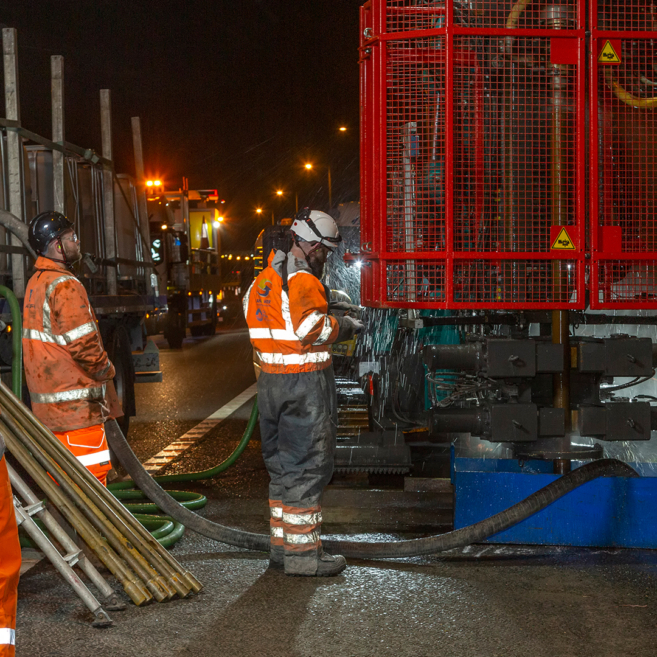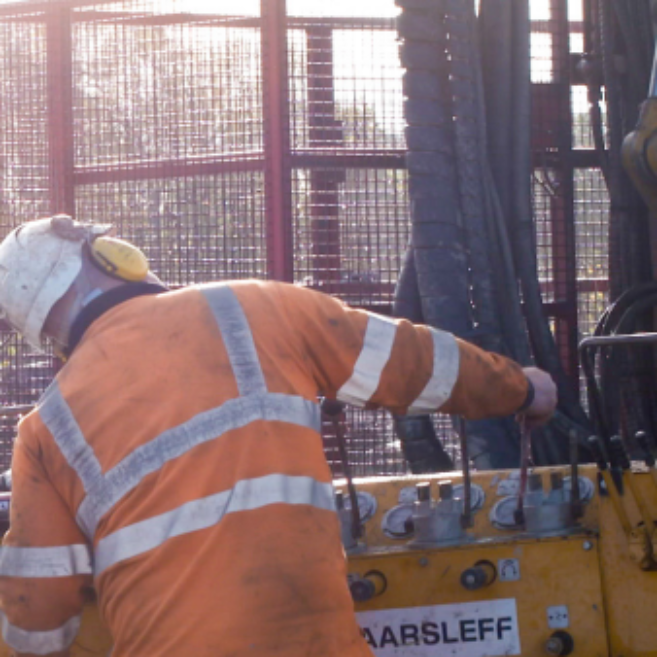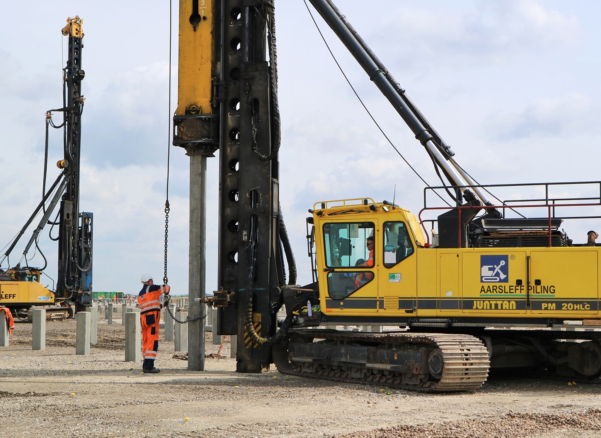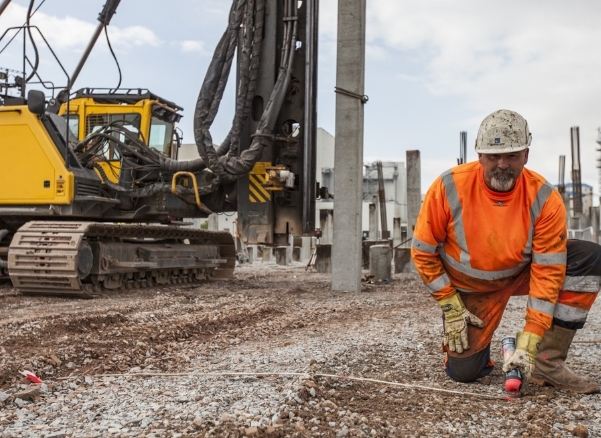Common Questions Answered: Drilling and Grouting FAQs
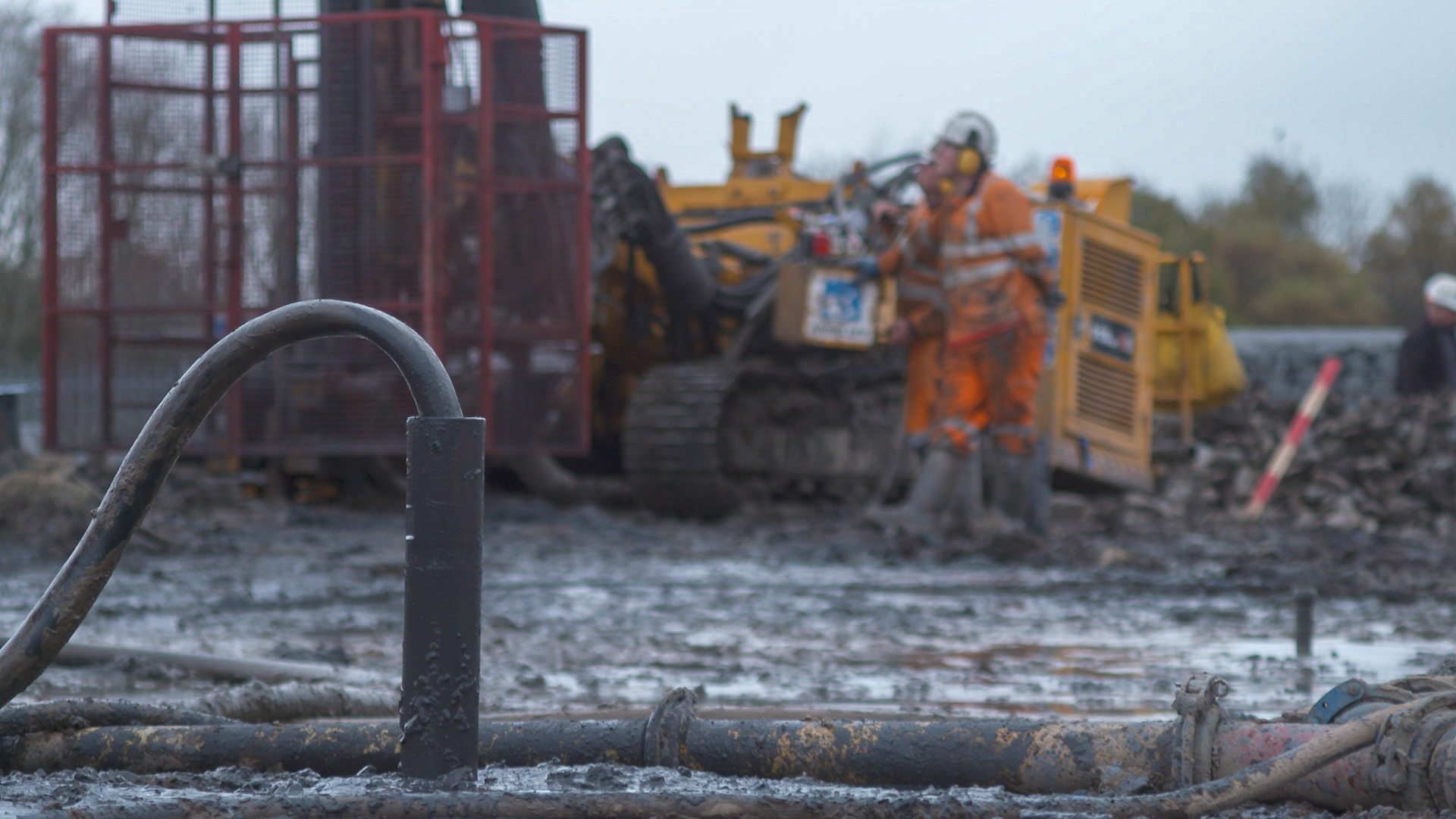
Drilling and grouting is a versatile technique used in soil engineering to achieve soil stabilisation. This blog explores the process of drilling and grouting in civil engineering, its significance in soil stabilisation, and the benefits it offers. Discover how Aarsleff Ground Engineering excels in the design and delivery of operational excellence through drilling and grouting, adding value to your projects.
Why is grouting important in soil engineering?
Voids beneath the ground pose risks to buildings and their foundations. Collapse of the ground above these voids can lead to crown-hole development and subsidence. Drilling and grouting helps mitigate these risks by bulk filling voids, preventing subsidence, and safeguarding structures and infrastructure.
How is Grouting done in civil engineering?
Drilling and grouting involve working along strategically spaced drilling points laid out on a grid. Using specialised equipment such as rigs and casing, you then drill below the voids. Grout is then injected to fill the void from the bottom to the surface through a flexible tube.
As industry leaders, Aarsleff Ground Engineering combine our design expertise, specialised plant, and skilled personnel to execute all types of drilling and grouting works. This combined approach is particularly versatile on projects related to abandoned mines and sites with weak soil, where drilling and grouting techniques prove especially beneficial.
What is Soil Stabilisation?
Soil stabilisation refers to the process of modifying soil properties to achieve long-term strength improvements. The quality of the base soil plays an integral role in the performance of foundations for any development. When necessary, drilling and grouting can be employed to remediate soil performance before further foundations are installed. This process has a rich history, dating back to ancient times. For more information on the history of grouting from the 19th century onwards, you can visit our dedicated page.
Why do you need to grout near mines?
With a rich coal mining heritage dating back to 1575, the UK experienced significant growth during the industrial revolution in the 18th century and subsequent development in the 19th and 20th centuries. However, due to a wide range of concerns including environmental, there has been a shift away from coal usage in the 21st century. The last of the 1,334 deep mines operational in 1952 closed in December 2015. Around 15% of the UK’s land has been impacted by mining activities, making land development challenging. The Coal Authority oversees development on former coal mining sites, ensuring safety and proper permits. Aarsleff has a wide range of experience and expertise in former coal sites, making us a choice contractor, combining skill and commitment to operational excellence.
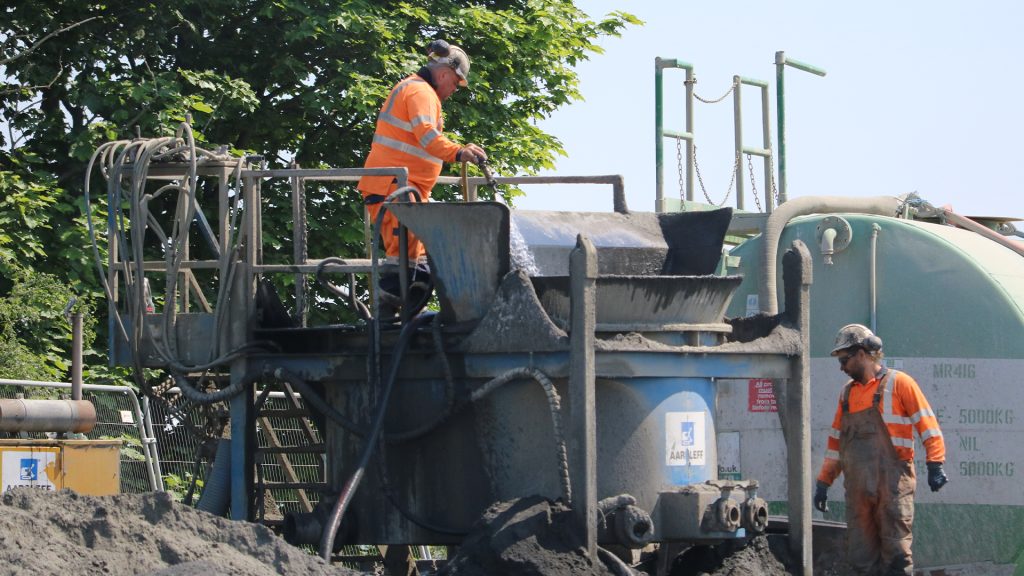
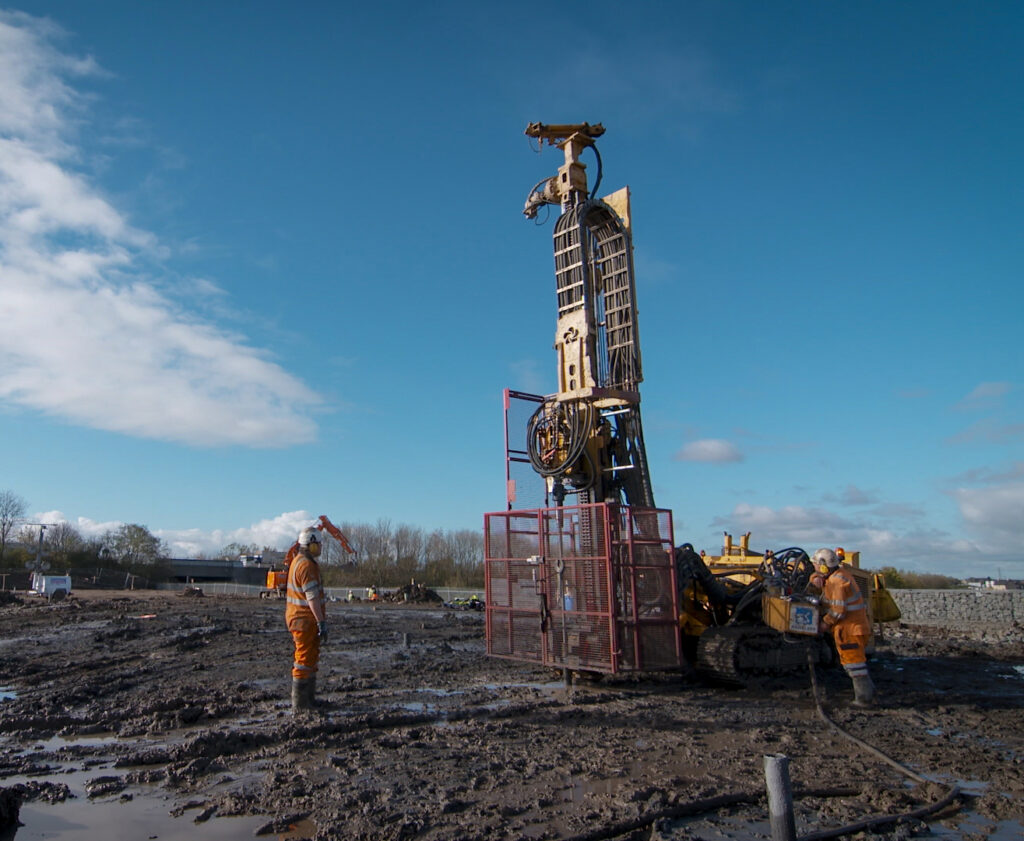
What are the benefits of grouting?
- Maintenance-free solution for void filling
- Prevents collapse of granular soils and settlement under adjacent foundations
- Controls groundwater movement and protects utilities from damage
- Enhances soil strength, rigidity, and reduces ground movement
- Provides predictable degree of movement, critical for structural integrity
- Suitable for limited working spaces, offering designable strength and permeability
Conclusion
Drilling and grouting are versatile techniques in soil engineering and stabilisation. Aarsleff Ground Engineering’s commitment to operational excellence and value engineering ensures optimal results for your projects. Whether it’s for soil stabilisation, development on former mine sites, or any drilling and grouting requirements, contact us to discuss how we can add value to your scheme.
The Latest. News, podcasts & projects
